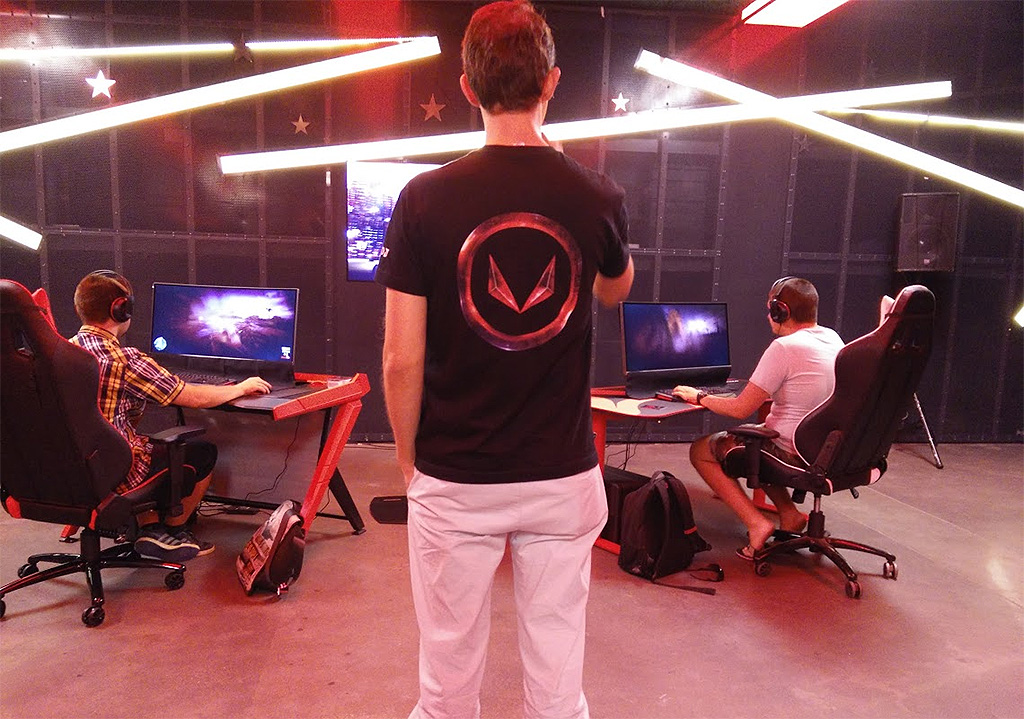AMD takes Radeon RX Vega on tour and compares it against a GeForce GTX 1080
Can we have some actual benchmark numbers, please?

AMD has already said it's planning to announce its Radeon RX Vega lineup for consumers at SIGGRAPH 2017 at the end of July / early August. In the meantime, it looks like AMD is trying to drum up some excitement by touring one of its upcoming Vega cards and showcasing how it compares in performance to Nvidia's GeForce GTX 1080.
The first stop on the tour was Budapest. Nagy Balázs András, author of the Bugger's Bugging Blog, said he was on hand at the event and that visitors got to play with two systems. According to András, one was an Asus ROG Swift PG348Q monitor with G-Sync support and the other one was an Asus Designo Curve MX34VQ with supporting FreeSync. Reddit forum member szunyogg was also at the event and said that one of the reps confirmed that the GTX 1080 was a non-Ti variant.
AMD covered up the markings on the monitors so that onlookers did not know which one was which. Instead, they were encouraged to guess based on a demonstration of performance.
As to the systems, both were Ryzen builds—presumably built around a Ryzen 7 processor—the only difference being the graphics card inside. The build with a Radeon RX Vega inside was attached to the MX34VQ and the GeForce GTX 1080 system was hooked up to the PG348Q. Both were shown running Battlefield 1 at 3440x1440 on the ultrawide displays.
AMD's bragging point was that the Vega system with monitor was $300 cheaper than the GTX 1080 + monitor combo, yet performance appeared the same, at least for the most part. András noted the "left system," which was later determined to be the Vega setup, had some hiccups when other players gave it a test spin. However, he said it was smooth for him, while the GTX 1080 setup exhibited some ghosting and sync issues. "I'm not sure it was properly engaged or working," András said.
Unfortunately the comparison does not let us draw any real conclusions for a number of reasons. For one, there was no FPS counter to compared performance. Secondly, this is just one game that is on display. Third, we don't know the exact settings used on the systems (DX11 or DX12, ultra quality, etc.) And finally, there was no mention of the drivers used. On the bright side, this demo suggests that AMD's top-end RX Vega card—which we presume this to be—will be capable of running high resolutions, at least in BF1.
There's a more concerning aspect in the "costs $300 less" argument, since the FreeSync monitor retails for $800 compared to $1300 for the G-Sync display. That puts the G-Sync display plus GTX 1080 at $1850 (MSRP), compared to $1550 for the FreeSync display plus RX Vega (MSRP), but the real price difference is the $500 delta between the monitors. This suggests AMD is looking at around $700 (give or take) for the RX Vega, which would put it into direct competition with the GTX 1080 Ti. If the demonstration really used a GTX 1080 and not a 1080 Ti, performance would appear to be in Nvidia's favor.
The biggest gaming news, reviews and hardware deals
Keep up to date with the most important stories and the best deals, as picked by the PC Gamer team.
These are obviously not final results, but earlier rumors have suggested the top Vega card will cost $650-$700 and use 275W. The hope is that it will be competitive with the $700 GTX 1080 Ti, not the $550 GTX 1080 that only requires 180W. We will have to wait and see how the final hardware performs.
Paul has been playing PC games and raking his knuckles on computer hardware since the Commodore 64. He does not have any tattoos, but thinks it would be cool to get one that reads LOAD"*",8,1. In his off time, he rides motorcycles and wrestles alligators (only one of those is true).


